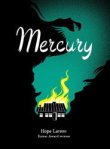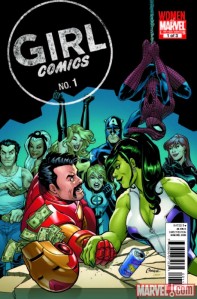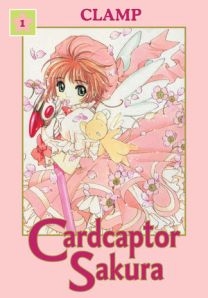It’s always handy when a theme emerges in the items that catch my eye from the current ComicList. And it’s nice that this week’s theme centers on great female protagonists.
Okay, so it’s not so nice that there’s such a long wait between new issues of Stumptown (Oni Press), written by Greg Rucka, illustrated by Matthew Southworth, and colored by Rico Renzi. It’s about a hard-living Portland private investigator trying to figure out why the daughter of a casino owner disappeared, and trying to stay alive until she finds the answer. The third issue arrives Wednesday.
If you like suspense but prefer your protagonists a little less seedy, I’d recommend the fourth volume of Fire Investigator Nanase (CMX), written by Izo Hashimoto and illustrated by Tomoshige Ichikawa. Nanase is a plucky arson investigator who shares a complex relationship with the Firebug, whose name says it all. It’s a fun procedural with likeable leads.
 Moving to the awesome shôjo front, we’ll start with the eighth volume of V.B. Rose (Tokyopop), written and illustrated by Banri Hidaka. Heroine Ageha is a budding handbag designer who goes to work for a bridal shop, then falls in love with the shop’s lead designer. Ageha is impulsive and talented, and Arisaka is bristly and businesslike. They have great chemistry, and the bridal-shop sparkle is undeniably eye-catching.
Moving to the awesome shôjo front, we’ll start with the eighth volume of V.B. Rose (Tokyopop), written and illustrated by Banri Hidaka. Heroine Ageha is a budding handbag designer who goes to work for a bridal shop, then falls in love with the shop’s lead designer. Ageha is impulsive and talented, and Arisaka is bristly and businesslike. They have great chemistry, and the bridal-shop sparkle is undeniably eye-catching.
 There’s also the fourth volume of Kimi Ni Todoke (Viz), written and illustrated by Karuho Shiina. Good-hearted, socially inept Sawako continues her campaign to win friends and influence people after years of being dismissed and avoided as the class creepy girl. This time around, she throws down with a romantic rival, though it’s entirely likely that Sawako won’t realize that she’s throwing down.
There’s also the fourth volume of Kimi Ni Todoke (Viz), written and illustrated by Karuho Shiina. Good-hearted, socially inept Sawako continues her campaign to win friends and influence people after years of being dismissed and avoided as the class creepy girl. This time around, she throws down with a romantic rival, though it’s entirely likely that Sawako won’t realize that she’s throwing down.
Those two titles alone make this one of the best shôjo Wednesdays imaginable. If a new volume of Itazura Na Kiss came out, I would burst into a cloud of sparkly chrysanthemum petals.













































Derivations on a theme
Goofy as this sounds, Fujikata plays fair with the details of the plot. Souka isn’t aggressive, but she’ll stand up for herself and her friends, so her ascent in the school’s power structure is silly but not implausible. It doesn’t stretch suspension of belief to the breaking point any more than the general premise itself does. The characters are generally charming, from sweetly feisty Souka to her love interest, the formidable, strangely maternal Yuuji Katou. Fujikata gives her characters the right kind of quirks that allow them to interact in fresh, funny ways, and she comes up with sturdy, comedic scenarios to showcase them, just as Morinaga and Hatori do in their titles.
It’s a likeable, well-executed variation on a very common theme, and its clear-headed freshness keeps it from seeming derivative to the point of superfluous. Fujikata also gives good author’s notes in which she expresses pixilated amusement that her editor keeps letting her get away with this stuff.
I think it’s the relentless overlay of cuteness that Kawamura slathers on her pages. I’ve got no problem with cute in general, but there’s a certain kind of sugary adorability that I find completely resistible. Kawamura erects her very familiar framework with a style that’s (for me) too reminiscent of some of the work of Arina Tanemura – tons of bouncy hair, sheets of screen tone, hug-me-now character designs, and enough hair ribbon to fashion a sturdy noose. There’s never quite enough that’s interesting or specific to Panic x Panic to distract me from thoughts of other, better versions of the same story.
(These reviews are based on complimentary copies provided by the publisher.)